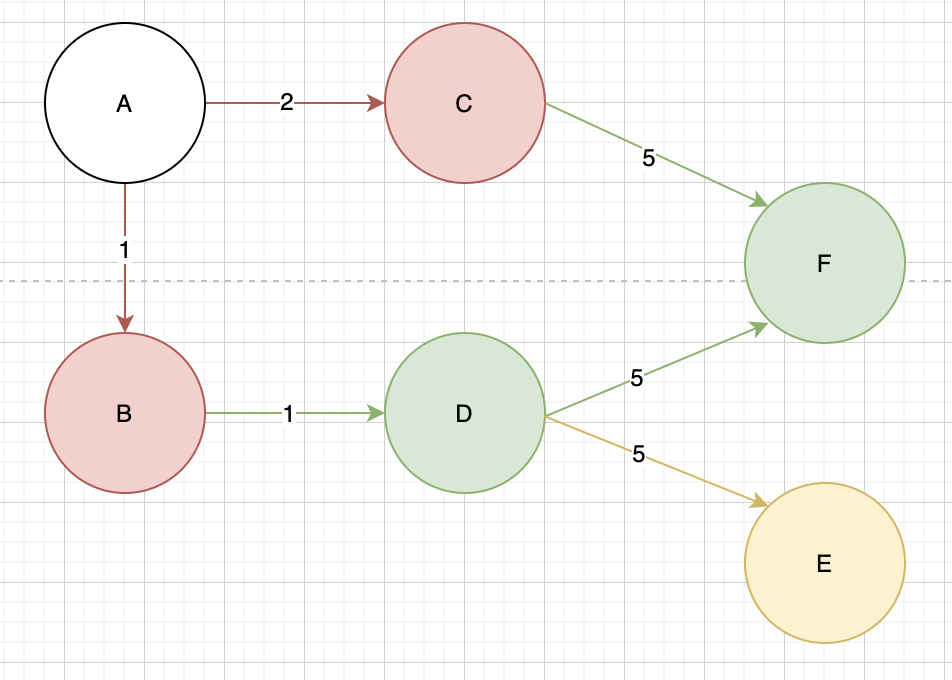BFS是簡寫,全名是Breadth-First Search(廣度優先搜尋演算法)
BFS跟DFS一樣,也是搜尋的演算法,一樣是很常見哦!
DFS是以深度為優先,每一條路都會搜尋到盡頭,BFS的做法不一樣是以廣度優先,會把旁邊的都搜尋完再擴散出去。
來看一下圖:
一樣是從A作為起點,先把旁邊的都走完,再往外去找。
A先找到B、C(紅),走完了再往外找,B下一個是D(綠),C下一個是F(綠),最後D再走到E(黃)
我們需要來一個Queue,來記錄接下來要走的頂點,把每一個要走的頂點放到Queue裡面,再用一個index去控制順序。
ex:
我先從A點開始走
queue: [A]
index: 0
A會先遇到B、C,再沒有邊了,就把index++
queue: [A,B,C]
index: 1
再從頂點B的邊去搜尋,找到D,最後一樣把index++
queue: [A,B,C,D]
index: 2
再重複這個過程,把每一個頂點的邊走完就可以了~
程式:
func (g *Graph) BFS(target *Vertex) {
visted := g.getVistedVertex() // 用來記錄走過的頂點
visted[target] = true
queue := []*Vertex{
target,
}
index := 0
for index < len(queue) {
for _, edge := range g.adjList[queue[index]] {
if !visted[edge.Vertex] {
fmt.Printf("vist: %v \n", edge.Vertex.Name)
queue = append(queue, edge.Vertex)
visted[edge.Vertex] = true
}
}
index++
}
}
func main() {
a := &Vertex{
Name: "A",
}
b := &Vertex{
Name: "B",
}
c := &Vertex{
Name: "C",
}
d := &Vertex{
Name: "D",
}
e := &Vertex{
Name: "E",
}
f := &Vertex{
Name: "F",
}
g := newGraph()
g.AddVertex(a)
g.AddVertex(b)
g.AddVertex(c)
g.AddVertex(d)
g.AddVertex(e)
g.AddVertex(f)
// A的邊
g.AddEage(a, b, 1)
g.AddEage(a, c, 2)
// B的邊
g.AddEage(b, d, 1)
// C的邊
g.AddEage(c, f, 5)
// D的邊
g.AddEage(d, e, 5)
g.AddEage(d, f, 6)
g.BFS(a)
}
output:
vist: B
vist: C
vist: D
vist: F
vist: E
一般情境來說用BFS跟DFS都可以解決問題
BFS比DFS要用更多的記憶體,因為多一個Queue去記頂點,如果要省記憶體可以用DFS
如果是要找目標附近的東西,用BFS會比較適合~
明天來講最短路徑~
